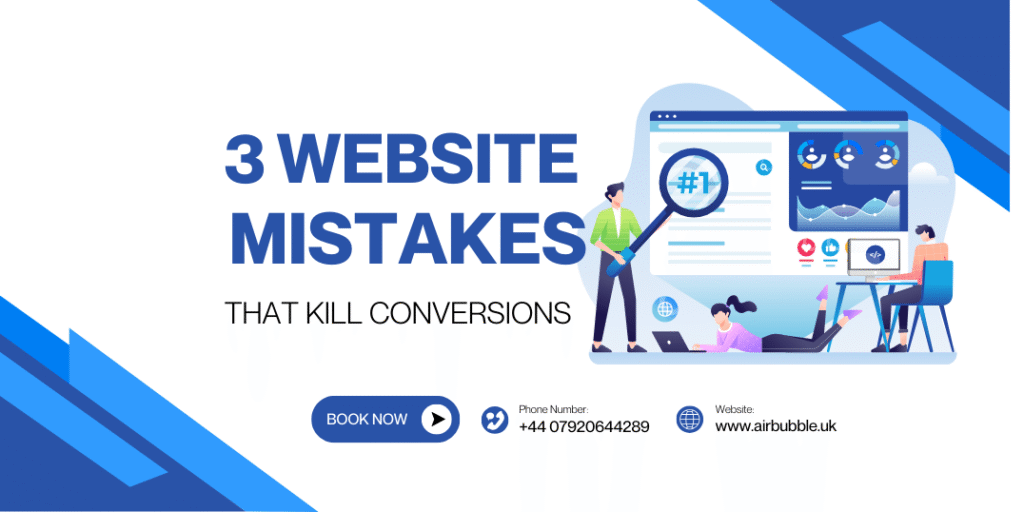Your website is your face in the digital world, but if it fails to convert visitors into leads, you’re missing out on potential profit. Many businesses invest in digital marketing strategies but overlook common website design mistakes that hurt their conversion rates.
Let’s break down the top three website errors that destroy conversions along with actionable website design solutions you can implement immediately.
1. Poor Navigation and side structure
Confusing navigation is one of the fastest ways to frustrate users and kill conversions. According to research by Baymard Institute, unclear navigation structures are a primary reason users abandon websites and lose trust in brands. Understanding the nuances of UI vs UX design is crucial in crafting intuitive navigation that meets users’ expectations.
If visitors struggle to find information, they won’t stick around. A complex or unclear navigation structure leads to frustration and lost conversions.
Simplify the journey:
- Keep navigation simple, with a clear structure.
- Limit menu items to essential pages.
- Use intuitive labels—no jargon or internal terminology.
- Implement a search function for quick access to content.
- Ensure important pages are no more than three clicks away from the homepage.
2. Slow Loading Speed
Your website design plays a fundamental role in performance. If your pages take longer than three seconds to load, visitors will abandon your site before seeing any content. Google also considers page speed a ranking factor, meaning slow website performance can harm your SEO position and reduce visibility in search results.
Unoptimised images, lack of CDN implementation, and excessive page elements are common issues. To achieve optimal load times, it’s essential to optimize website performance.
Speed it up:
- Use Google PageSpeed Insights to diagnose speed issues.
- Compress images without losing quality.
- Enable browser caching and use a content delivery network (CDN).
- Minimise unnecessary scripts and plugins.
- Switch to a reliable hosting provider if necessary.
3. Poor Quality Image and Media
Are your images enhancing or detracting from your website? High-quality images serve as the gateway to your content. Avoid generic stock photos that can make your site feel inauthentic. Instead, use relevant, high-resolution images that directly connect to your content and align with your brand colors. High-end brands often use professional, high-resolution images to showcase their products effectively, creating a strong visual impact that resonates with their audience.
To optimise your images without sacrificing quality:
- Compress files while maintaining visual clarity.
- Use appropriate file formats like JPEG for photographs and PNG for graphics.
- Implement responsive images that adapt to different screen sizes.
- Include descriptive alt text for accessibility.
- Maintain consistent aspect ratios across your site.
Image optimisation isn’t just about file size—it’s about creating a cohesive visual experience that enhances your content while promoting fast load times.
Get Expert Help from Website Optimisation Consultants
Every lost conversion is lost revenue. If your website design operates below standards, you will lose access to potential customer opportunities. Addressing these problems can remain manageable.
At Air Bubble, we provide website design and optimisation services that drive real business growth. Our team of specialists will evaluate your site, identify weaknesses, and implement high-impact changes that increase visitor conversion rates.
Let’s fix website design that’s losing you money. Contact us today for free audit and start transforming your website into a powerful tool that supports your goals rather than obstructing them.

